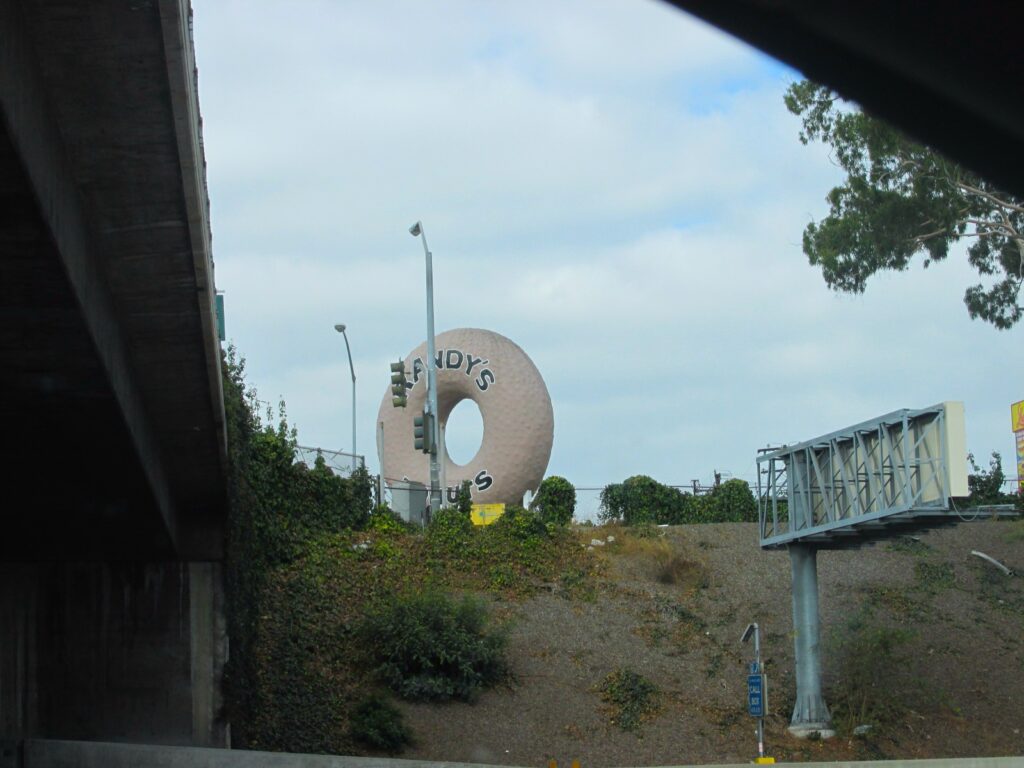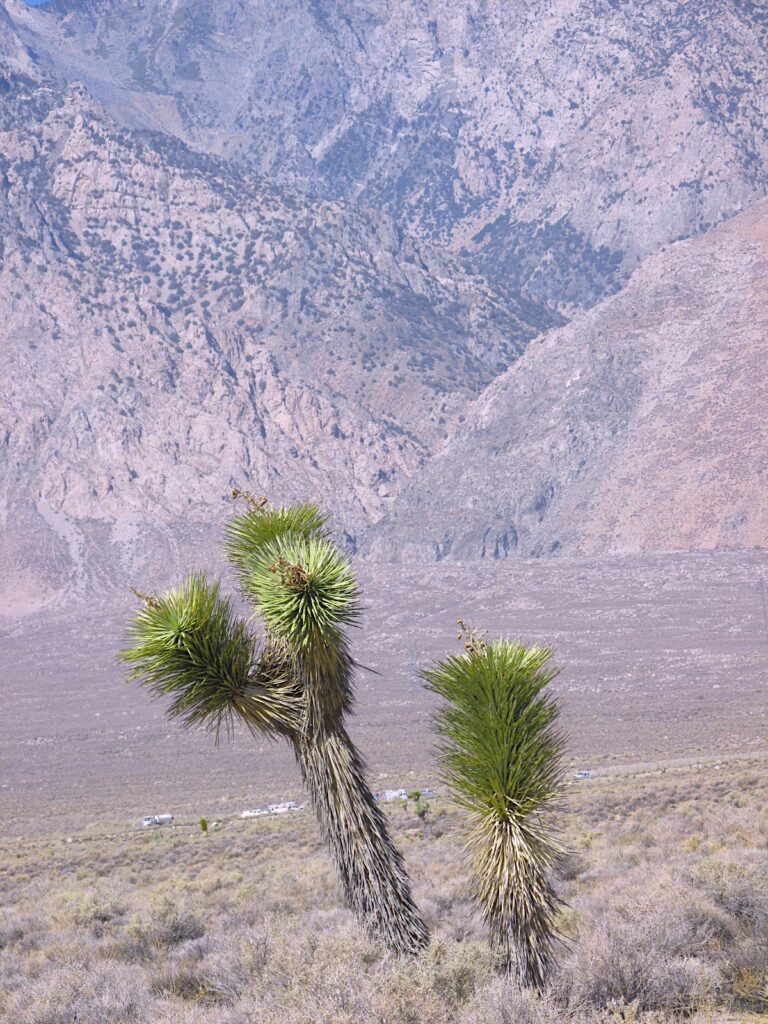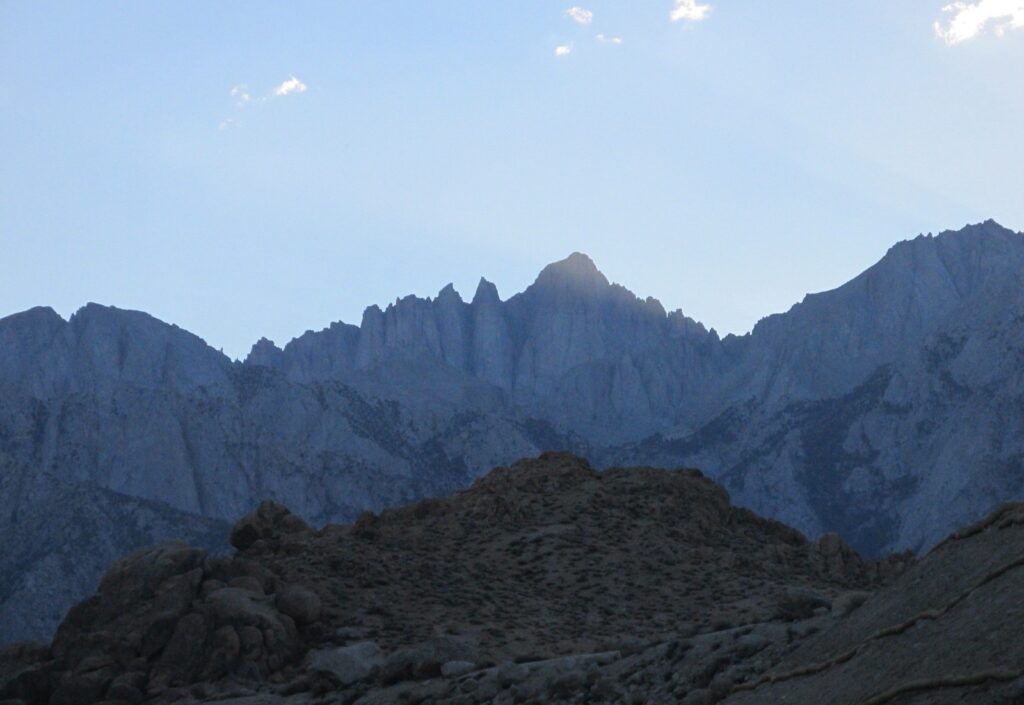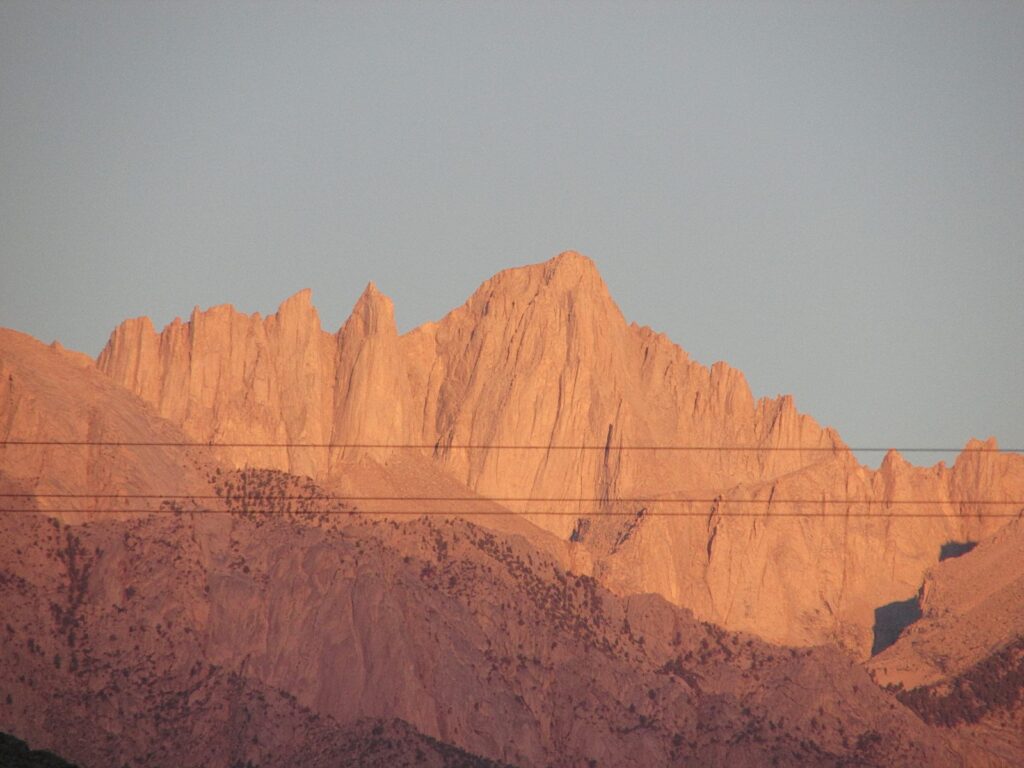the Sierra Nevada
California
September 2016
After an excellent flight from Pittsburgh to LAX — excellent meaning “not bouncy and it didn’t scare the hell out of me” — we jammed into a shuttle bus like a crowded Steelers bar during the Superbowl, only without the shouting, the beer and the black and gold, and everyone had suitcases. We were packed in like maggots, but very nice maggots. This bus transported us to the rental car center where, after picking up our little economy model, we drove north on the crowded highway in this most densely populated American city of Los Angeles.
When you get to be the size of Los Angeles, odd things happen. Like, donuts. Soon after leaving the airport in this preternatural city, we drive past an enormous donut, possibly the largest non-actual-donut donut in the world. It’s part of the Randy’s Donuts building where Randy has his bakery and where he makes donuts. Sucker is more than 32 feet in diameter (the donut.) I’m told the donuts are tasty.

We will be staying in Lone Pine, the town at the base of Mount Whitney. On our journey to this little town, we stop for lunch in a complex that, not coincidentally, contains a camping gear store. We must procure our stove fuel. When you are in the backcountry for days, eating potato chips and power bars just doesn’t cut it — you’ve got to have real food. We’ve learned that real food is often far more palatable when cooked. We discovered 400 002 years ago, give or take twenty minutes, that you need a controlled fire to cook your food without setting fire to everything else nearby. In some places, like the slopes of Mount Whitney, our destination, you are not only not permitted to build fires, but there is very little material to build fires with. You’re above tree line.
To address this issue, we have a little four ounce portable stove which mounts on top of a metal can filled with liquid petroleum gas — butane, propane, isobutane, N-butane — that burns very agreeably when you place your pot of spaghetti noodles on top of it.
Why bother finding a gear store and making an extra stop on the way to our hike? Why not just bring the fuel with us, like we do with everything else we might need on our backpacking trips?
It’s a simple matter of interpretation. While we call these metal containers of combustible liquid “fuel canisters,” the Transportation Security Administration, the TSA, calls them “bombs.” Consequently, we do not put them in our luggage. We buy them when we are safely at a distance from our destination airport.
And speaking of bombshells, our drive takes us through Van Nuys, which Lisa tells me is the porn capital of the world. I don’t ask her how she knows this and I try not to wonder how I did not know this. “Could be filming going on in any one of these regular looking houses, right now,” she says. Lisa is driving so I try to look through the window shades but I don’t see anything all that titillating.
We drive on the Ronald Reagan Freeway past Simi Valley, home of the Ronald Reagan Presidential Library. I try to peek through the window blinds here too but again, nothing remotely stimulating.
Continuing north through the little town of Mojave where gasoline goes for a rather steep $4.79 a gallon. Should use our little camping fuel canisters instead.
I get a jones for a milkshake. I haven’t imbibed a milkshake in years so this surprises me. I tell Lisa. In response, she pulls into a convenient In-N-Out Burger, which, even though they’ve been selling fast food since 1948, I had not heard of before. Already this trip is full of adventure. (I wonder at the pornographic implications of the name of the burger…)
I don’t often endorse products, especially with what they pay me, but I will say that this In-N-Out Burger milkshake is one of the best tasting things I’ve ever put into my mouth. I can’t wait to do it again. I’ll bet it’s as good as, if not better than, a Randy’s donut.
Further on, California City. Interesting place. Or in another perspective, interesting non-place. In 1958, a sociology professor and real estate developer named Nat Mendelsohn bought 80 002 acres of Mojave Desert land with the intention of building the state’s next great city. He wanted to rival Los Angeles so he laid out plans for housing developments, built roads and planned a lake. For whatever reason, it never developed. But some believe there is still hope. Currently the place looks like a ghost suburb of an ancient civilization.
Three time California City Mayor Jennifer Wood predicted that if she were to live another 100 years, she might see the city finally catch on and fulfill Mendelsohn’s dream. I can’t tell if it’s an apology that the city hasn’t been built, or an encouragement that it will be, but the mayor says, “There are more stars in California City than there are in Hollywood.” Just 100 more years.
The rest of our drive includes true desert landscape, rolling hills of rock, sand, salt, volcanic lava and other minerals, plus nearly 2000 species of plants, the most popular of which is the Joshua Tree.

Unnatural growth in this desert includes thousands of windmills and miles of solar panel fields. If you’ve got to build something, if you’ve got to add things to this natural environment, better windmills and solar panels than refineries.
225 miles after stepping off the airplane, we stop at the Inter-Agency Visitors Center, the check-in point for our wilderness journey. It has often been said that we humans have a tendency to enjoy our natural places so much that we “love them to death.” So the number of visitors who are allowed into these natural places, such as Mount Whitney, is limited. We are here to pick up our permits.
Seven months ago, in February, Lisa entered our names into the permit lottery to be allowed on the mountain. This year, 2016, more than thirteen thousand applications were submitted, a record. Of these, 100 people per day are awarded day use permits and 60 people per day are awarded overnight permits. Last year, we weren’t so lucky, not getting in at all. This year, we score! We’re on our way!
Here we are at the Center to pick up our permits, those valuable pieces of paper that allow us entry to the mountain. We learn that we are three days early. Permits may only be picked up within 48 hours of your hike.
We go next door to our hotel. Long day. Relaxing at the pool with a perfectly clear view of the highest point in 49 of the United States.


We make good use of the days before our immersion into the forest wilderness, getting to know a little bit of Lone Pine, the town at the eastern flats of the mountain. Restaurants with good food, an over-crowded outdoor gear store with everything you could ever want (including full gas canisters,) a Chamber of Commerce which seems to always be closed. Lone Pine is a small town, about 2000 residents. They’ve got the Lone Pine Film History Museum here. It looks like a 1930’s movie theater and shows off exhibits and props used in movies from the past century.
